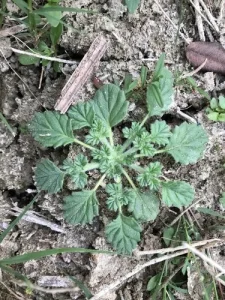
Coldenia
Basic Information Common Name: Coldenia Scientific Name: Coldenia Native Habitat: Tropical and subtropical regions of Africa, Asia, and Australia. History / Discovery / Cultivator The
Common Name: Coldenia
Scientific Name: Coldenia
Native Habitat: Tropical and subtropical regions of Africa, Asia, and Australia.
The genus Coldenia is named in honor of Cadwallader Colden, an 18th-century Scottish physician, botanist, and lieutenant governor of New York. While Colden’s primary contributions were not directly related to the discovery or cultivation of Coldenia species, his prominence in early American botany led to the genus being named after him. The plant’s formal scientific description and classification likely occurred through the work of botanists examining specimens collected from its native ranges across Africa, Asia, and Australia.
Coldenia plants, belonging to the family Boraginaceae, are primarily known for their weedy nature and their ecological roles in disturbed habitats. Due to their relatively unassuming appearance and lack of ornamental appeal, they have not been widely cultivated or popularized. However, some indigenous communities may have utilized Coldenia species for traditional medicinal purposes, although detailed ethnobotanical information is often scarce. The exact geographical origins of specific Coldenia species vary depending on the species in question. Some species are native to specific regions within Africa, while others are found across broader areas of Asia and Australia.
The lack of significant cultivation history for Coldenia contrasts sharply with many other plant genera that have undergone extensive breeding and selection for desirable traits. Coldenia species have remained largely unchanged by human intervention, existing as wild plants in their natural environments. Their ecological importance lies in their ability to colonize disturbed areas and contribute to soil stabilization. The discovery and scientific documentation of Coldenia species were crucial for understanding their taxonomic relationships within the Boraginaceae family and their distribution patterns across the globe. Future research may uncover further information about their traditional uses and potential ecological benefits.
Given its weedy status, Coldenia isn’t actively cultivated. The focus has been more on its botanical classification and ecological role.
| Category | General Requirement | Notes |
|---|---|---|
| Light | Full sun | Prefers bright, direct sunlight for optimal growth. |
| Water | Moderate | Water when the soil surface feels dry to the touch. Avoid overwatering. |
| Humidity | Low | Tolerates low humidity levels well. |
| Temp. Range | Warm | Prefers warm temperatures; avoid freezing conditions. |
| Soil Type | Well-draining | Sandy or loamy soil with good drainage. |
| Fertilizer | Minimal | Usually not necessary; can benefit from occasional light feeding. |
| Toxicity | Unknown | Insufficient data available; handle with caution. |
Coldenia species exhibit several adaptations that allow them to thrive in their native habitats. These include tolerance to drought conditions, which is crucial in arid and semi-arid environments. Their often prostrate growth habit helps them conserve moisture and avoid strong winds. The presence of hairs on their leaves and stems reduces water loss through transpiration. Additionally, some species have adapted to saline soils, allowing them to colonize coastal areas.
Coldenia species are typically propagated from seeds. Seed collection involves gathering mature seed pods and extracting the seeds. Seeds can be sown directly into the soil or started in seed trays. Stem cuttings are also a possible, though less common, propagation method. Cuttings should be taken from healthy stems and rooted in a well-draining medium.
The toxicology of Coldenia species is not well-documented. Due to the limited research on their toxicity, it is advisable to exercise caution when handling these plants. Ingestion may cause mild gastrointestinal irritation. Keep out of reach of children and pets until more detailed information becomes available. Specific toxins, if any, have not been thoroughly investigated.
Coldenia plants are generally not considered rare. They are relatively common in their native ranges. They are not typically sought after by collectors due to their weedy nature.
Coldenia species have little to no commercial value. They are not ornamental plants and are not traded in the horticultural industry.

Basic Information Common Name: Coldenia Scientific Name: Coldenia Native Habitat: Tropical and subtropical regions of Africa, Asia, and Australia. History / Discovery / Cultivator The
